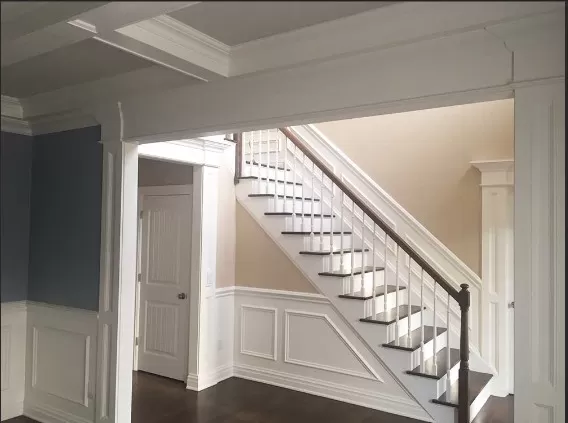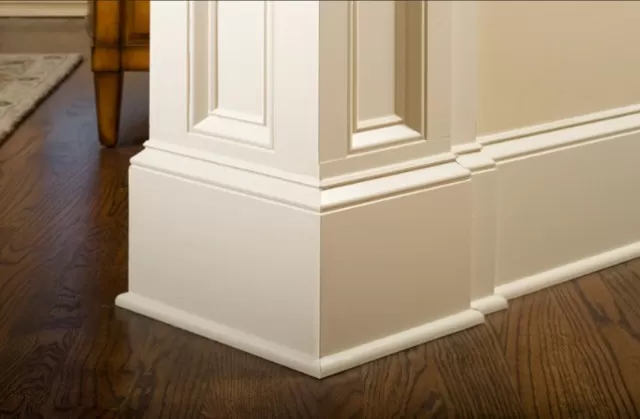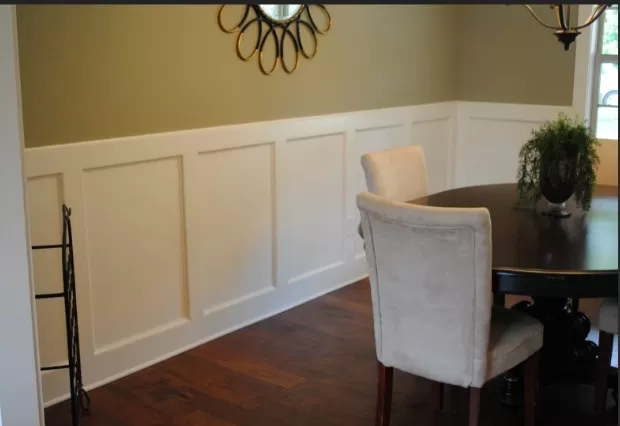Elevate Your Space: Know Your Moldings for Stylish Trim. Whether you’re deciding between cove or crown molding, batten or baseboard, understanding the distinctions between these commonly used molding styles is crucial in determining the ideal choice for your residence.
This comprehensive guide explores the different types of molding frequently found in homes today, providing insights into their characteristics, applications, and aesthetic appeal. By delving into the world of molding, you can confidently select the style that best complements your home’s architecture and design.
Unveiling the Diversity of Decorative Moldings

A wide range of decorative moldings can be found in various forms, each serving a specific purpose.
For instance, they can be used to frame doors or create visual transitions where walls meet the floor. With the abundance of molding options available, it can be challenging to differentiate between them and determine which ones are suitable for your home renovation.
Fortunately, there’s a solution: Explore the following guide to finally identify your preferred molding style!.
Exploring Door Casing: Bridging Gaps with Style
Casing serves the purpose of concealing the exposed space between walls and door or window frames.
While there are various door casing styles available, they typically have a width ranging from two to three inches.
Enhancing Walls and Floors: Exploring Baseboards and Their Styles

Baseboards are utilized to neatly trim the area where walls meet the flooring, commonly spanning a width of three to five inches.
Typically, baseboard styles feature a simple design and are often complemented by a small section of quarter-round trim, adding a subtle accent.
Crown Molding: Elevating Rooms with Majestic Transitions
Crown molding, also referred to as cornice molding, is the distinguished architectural element that adorns the junction between walls and the ceiling.
It is renowned as the “crowning” feature of a room. Crown moldings usually exhibit intricate and elaborate profiles, although there are various types of crown molding available.
Chair Rail: Combining Function and Style in Wall Protection

Chair rail molding serves a practical purpose by safeguarding walls against furniture-induced damage.
However, it also possesses a decorative aspect, providing a visual separation between distinct wall coverings such as paint and wallpaper. Chair rail molding effectively combines functionality and style in wall protection.
Chair rail molding serves a dual purpose by not only providing a practical function of protecting walls from potential damage but also adding a decorative element that visually separates different wall coverings, such as paint and wallpaper.
This distinctive type of molding effectively combines functionality and style, offering an elegant and practical solution for enhancing the aesthetic appeal of your walls. This article explores the versatile nature of chair rail molding, highlighting its ability to strike a perfect balance between functionality and decorative charm.
Chair rail molding, with its unique placement along the wall, adds an eye-catching detail that enhances the overall design and character of a room. It serves as a visual break, creating a sense of balance and proportion within the space. By strategically installing chair rail molding, you can create a harmonious transition between different wall coverings, such as contrasting Paint Colors or patterns of wallpaper.
Beyond its decorative function, chair rail molding also provides practical benefits. It acts as a protective barrier, guarding the lower portion of the wall against scuffs, dents, and other forms of damage that can occur from furniture, chair backs, or accidental collisions. This makes it an ideal addition in high-traffic areas or rooms where furniture is frequently moved.
When choosing chair rail molding, consider the style and architecture of your home. Traditional homes often feature ornate and intricately designed chair rail molding, adding a touch of elegance and sophistication. In contrast, modern or contemporary spaces may opt for simpler and sleeker profiles to maintain a minimalist aesthetic.
Installation of chair rail molding requires careful measurement and precision. It is recommended to hire a professional or consult a skilled carpenter to ensure a seamless and professional finish. With proper installation, chair rail molding can transform the look and feel of a room, elevating its visual appeal and providing an added layer of protection.
In conclusion, chair rail molding offers both functional and decorative benefits for your walls. It not only provides a visual separation between different wall coverings but also serves as a practical safeguard against everyday wear and tear. Consider incorporating chair rail molding into your home to elevate its style and protect your walls with a touch of elegance.
*The information is for reference only.